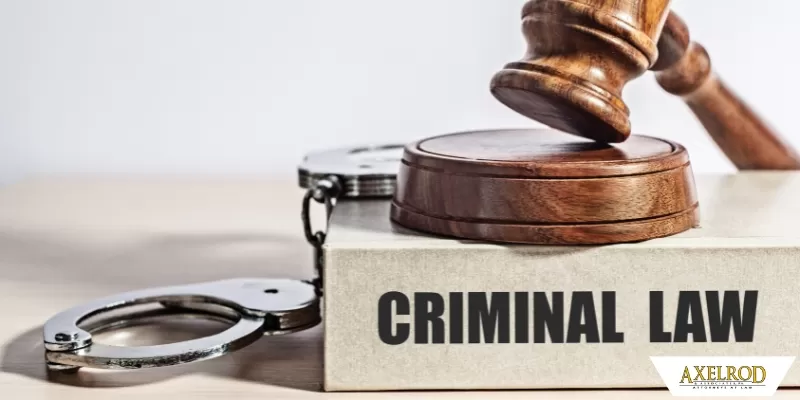Navigating the criminal justice system can be overwhelming, especially when facing criminal charges. Understanding the different legal defenses available is crucial for anyone involved in a criminal case. From self-defense to insanity, knowing these defenses can significantly impact your case. In this guide, we’ll delve into the most common legal defenses in criminal law, providing you with a comprehensive understanding of each, and how they might be used in various scenarios.
What Are Legal Defenses in Criminal Law?
Legal defenses in criminal law are strategies used to challenge the prosecution’s case and avoid liability or reduce penalties. Here’s a breakdown of some of the most commonly used defenses:
1. Self-Defense
What It Is: Self-defense is a claim that you acted to protect yourself or others from imminent harm.
When It Applies: This defense is applicable when you had a reasonable belief that you were in danger and used proportional force to protect yourself.
Key Considerations:
- The threat must be immediate.
- The force used must be proportional to the threat.
Example: If someone attacks you with a weapon and you respond by using a similar weapon to defend yourself, self-defense may be a valid claim.
2. Defense of Others
What It Is: Similar to self-defense, this defense argues that you acted to protect someone else from harm.
When It Applies: This defense is used when you reasonably believe that another person is in immediate danger and you take action to prevent harm.
Key Considerations:
- Your actions must be reasonable and necessary to protect the other person.
- You must have a genuine belief in the threat against the other person.
Example: If you see someone being attacked and step in to help, using reasonable force, you may be able to claim defense of others.
3. Insanity Defense
What It Is: The insanity defense argues that you were not mentally competent at the time of the crime and therefore should not be held criminally responsible.
When It Applies: This defense is used when a person was suffering from a severe mental illness that prevented them from understanding the nature of their actions or distinguishing right from wrong.
Key Considerations:
- Requires medical evidence and expert testimony.
- Standards for insanity vary by jurisdiction.
Example: A person with a documented severe mental illness who commits a crime while having a psychotic episode might use the insanity defense.
4. Alibi
What It Is: An alibi is a defense where you provide evidence that you were somewhere else when the crime occurred.
When It Applies: This defense is used to prove that you could not have committed the crime because you were not present at the scene.
Key Considerations:
- The alibi must be supported by evidence or credible witnesses.
- Timing and location details are crucial.
Example: If you were at a party during the time a robbery occurred and can provide witnesses or receipts to prove it, you might use an alibi defense.
5. Mistake of Fact
What It Is: This defense claims that you were mistaken about a fact, and this mistake led to the commission of the crime.
When It Applies: This defense is applicable when the mistake negates the intent required for the crime.
Key Considerations:
- The mistake must be reasonable and genuine.
- This defense is often used in cases of unintentional wrongdoing.
Example: If you took someone’s property believing it was your own, a mistake of fact defense might be applicable.
6. Duress
What It Is: Duress involves claiming that you committed the crime because you were forced to do so under threat of immediate harm.
When It Applies: This defense is used when you were compelled to commit a crime because of threats or coercion from another person.
Key Considerations:
- The threat must be immediate and serious.
- You must have had no reasonable way to escape the threat.
Example: If someone threatens you with harm if you don’t participate in a robbery, you might use duress as a defense.
7. Entrapment
What It Is: Entrapment argues that law enforcement induced you to commit a crime that you would not have otherwise committed.
When It Applies: This defense is used when an individual was persuaded by law enforcement to commit a crime they were not predisposed to commit.
Key Considerations:
- Requires evidence that the government’s actions led you to commit the crime.
- The focus is on the conduct of law enforcement.
Example: If an undercover officer coerces you into buying illegal drugs, you might claim entrapmen
YOU MIGHT ALSO LIKE THIS: Trademark vs. Copyright vs. Patent: Understanding Intellectual Property Protections
Key Considerations When Using Legal Defenses
Evidence and Documentation
To successfully use any defense, gathering evidence is crucial. This might include witness statements, expert testimonies, and physical evidence to support your claims.
Legal Representation
Choosing the right attorney is vital. An experienced criminal defense lawyer can help you evaluate which defenses are viable and develop a strong case strategy.
Understanding Jurisdictional Differences
Laws and standards for legal defenses vary by jurisdiction. It’s essential to understand the specific laws applicable in your area.
Conclusion
Understanding common legal defenses in criminal law is essential for navigating the criminal justice system effectively. Whether you’re facing charges or simply want to be informed, knowing these defenses can provide valuable insights and help you make informed decisions. Remember, having a knowledgeable attorney by your side is crucial in leveraging these defenses effectively and ensuring your rights are protected.
